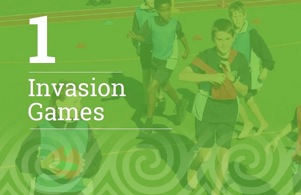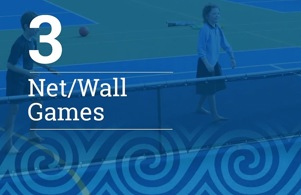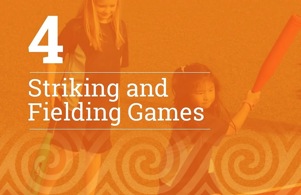Learning intention
To understand what the key things teachers consider when they design activities to get their students moving.
Discussion
Schools have access to a resource called MoveWell which provides practical ideas, advice and support to help develop children’s confidence, knowledge, skills, and attitudes so that they enjoy participating in physical activity.
In this learning experience we are going to have a look at the MoveWell resource to get a feel for how it structures activities to get children moving.
Before we start, let's get familiar with the types of games that are included in the MoveWell resource.

1. Tag and invasion Games
Tag games are games in which two or more players chase other players in an attempt to ‘tag’ them and score a point. The skills learnt in tag games develop to become important in many invasion games. The important outcome is being able to read the opposition. Invasion games are games in which the aim is to invade an opponent’s territory and score a goal or point. These are typically fast-paced games that need teamwork in order to control the ball, keep possession, move into a scoring position, and prevent the opposition from scoring. Teams share the same playing area as they attempt to both score and prevent the other team from scoring.
2. Cooperative games
Cooperative games are those in which players work with one another in order to achieve a common objective. The goal of a cooperative game is to reduce emphasis on competition and increase emphasis on the social aspects of working in teams and groups. Learning to cooperate includes a core set of skills needed in many other game forms.

3. Net/Wall games
Net/wall games are games in which players send an object (e.g., ball, shuttle) over a net or against a wall so that it lands in an area that an opponent is defending. The aim is to make it difficult for the opponent to return the object or force them into a mistake.

4. Striking and fielding games
Striking and Fielding games are those in which one team can score points when a player strikes a ball (or similar object) and runs to designated playing areas while the other team attempts to retrieve the ball and return it to prevent their opponents from scoring.
5. Target games
Target games are those in which players send an object (such as a ball or dart) towards a target area. Sometimes this may also involve avoiding obstacles, defending, guarding, or blocking the path of the opposition’s ball to stop them from scoring. Target games come in two forms. Opposed target games are ones, such as snooker or bowls, where the opposition’s play affects the next move. In unopposed target games, such as golf and darts, the outcome is not affected by what the opposition does.
6. Challenge games
Challenge games are those in which players solve a particular problem or complete a challenge task. Players can either work individually or as part of a team. Challenge games provide the opportunity to focus on skills, including problem solving, managing risk, and working as a team, that are inherent to active and safe engagement in games as well as enjoying the sense of belonging and being challenged.
Activity
The MoveWell resource includes six sets of games. Each game supports the development of a range of skills. Let's have a look at some of the games and work out what skills they are developing. As small groups choose one or more of the six types of games below. Download the document which has a description of how to play the game along with a set of skills that it may be developing. Set up the game and give it a go. When you have finished reflect back on the game and work out what skills it helped you develop.
 pdf - 6161 KB
pdf - 6161 KB
 pdf - 5452 KB
pdf - 5452 KB
 pdf - 5381 KB
pdf - 5381 KB
 pdf - 4072 KB
pdf - 4072 KB
 pdf - 2364 KB
pdf - 2364 KB
 pdf - 3864 KB
pdf - 3864 KB






